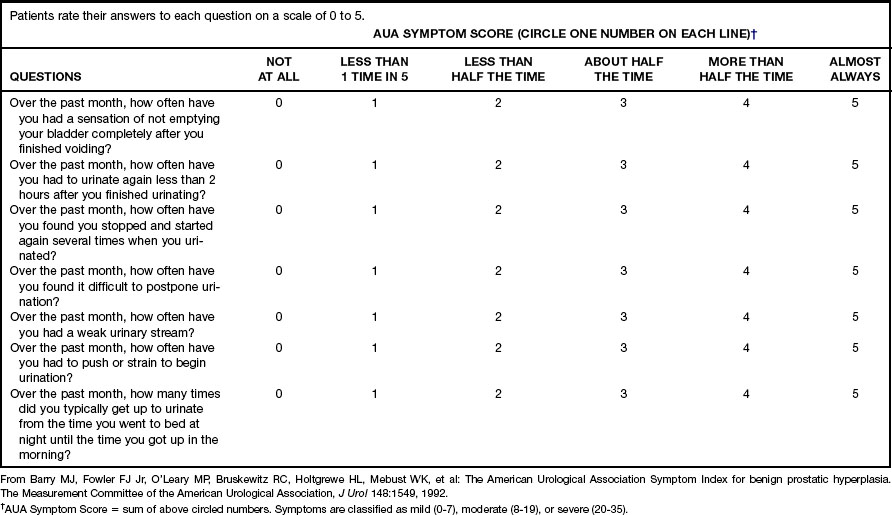CHAPTER 17 Genitourinary problems in males
Diagnostic reasoning: focused history
Immunocompromised patients
Immunocompromised patients are susceptible to overwhelming infections by both common and atypical organisms, and aggressive investigation is warranted.
Acute pain
Acute pain in the abdomen or flank is characteristic of bladder, ureter, and kidney involvement. Acute pain in the scrotum or testicles may indicate infection or pathology of the scrotal contents or it may be referred pain from other sites in the urinary tract. Pain in the scrotum or testicles is characteristic of inflammation of the testicles, epididymitis, or torsion of a testicle (see Chapter 24).
Pain
Can the symptoms be localized within the urinary tract?
Key questions
 Do you have trouble starting to urinate (e.g., slow/weakened urinary stream, dribbling of urine)?
Do you have trouble starting to urinate (e.g., slow/weakened urinary stream, dribbling of urine)?
 Do you have low back, flank, or abdominal pain?
Do you have low back, flank, or abdominal pain?
 Do you have aching in the perineal area?
Do you have aching in the perineal area?
 Do you have suprapubic discomfort?
Do you have suprapubic discomfort?
 Have you had urinary incontinence?
Have you had urinary incontinence?
 Do you have frequency, urgency, dysuria, or penile discharge?
Do you have frequency, urgency, dysuria, or penile discharge?
Hesitancy, slow urinary stream, and dribbling of urine
In men older than 50, the presence of hesitancy, slow urinary stream, and dribbling of urine with a gradual onset over time indicates obstructive problems from benign prostatic hypertrophy. Have the patient complete the American Urological Association (AUA) Symptom Index (Table 17-1). Using the index, classify symptoms as mild (0 to 7), moderate (8 to 19), or severe (20 to 35).
Penile discharge with frequency, urgency, and dysuria
Penile discharge with frequency, urgency, and dysuria is characteristic of anterior urethral irritation in males and of exposure to a sexually transmitted infection (STI) (see Chapter 24).
Nocturia
Patients who report daytime frequency without nocturia are usually free of organic disease.
Polyuria
Are there any specific risk factors to point me in the right direction?
Key questions
Age
The occurrence of UTIs in males increases with age. Slow development of prostatic obstruction is common in men older than 50 and is usually painless. Patients have difficulty starting the urine stream; the urine stream has decreased force; and urine often continues to dribble after voiding. Chlamydia is the major cause of prostatitis, epididymitis, and nongonococcal urethritis in males under 40 years of age. Adolescents who are sexually active are at particular risk for STIs.
Bicycle riding
Stay updated, free articles. Join our Telegram channel

Full access? Get Clinical Tree

























